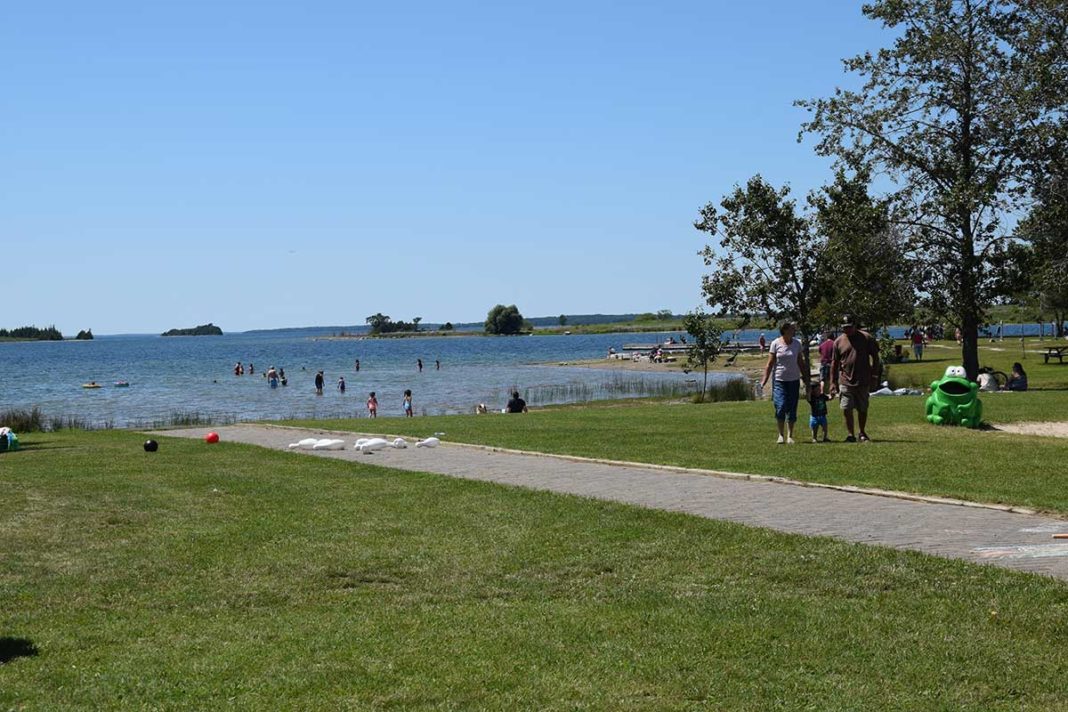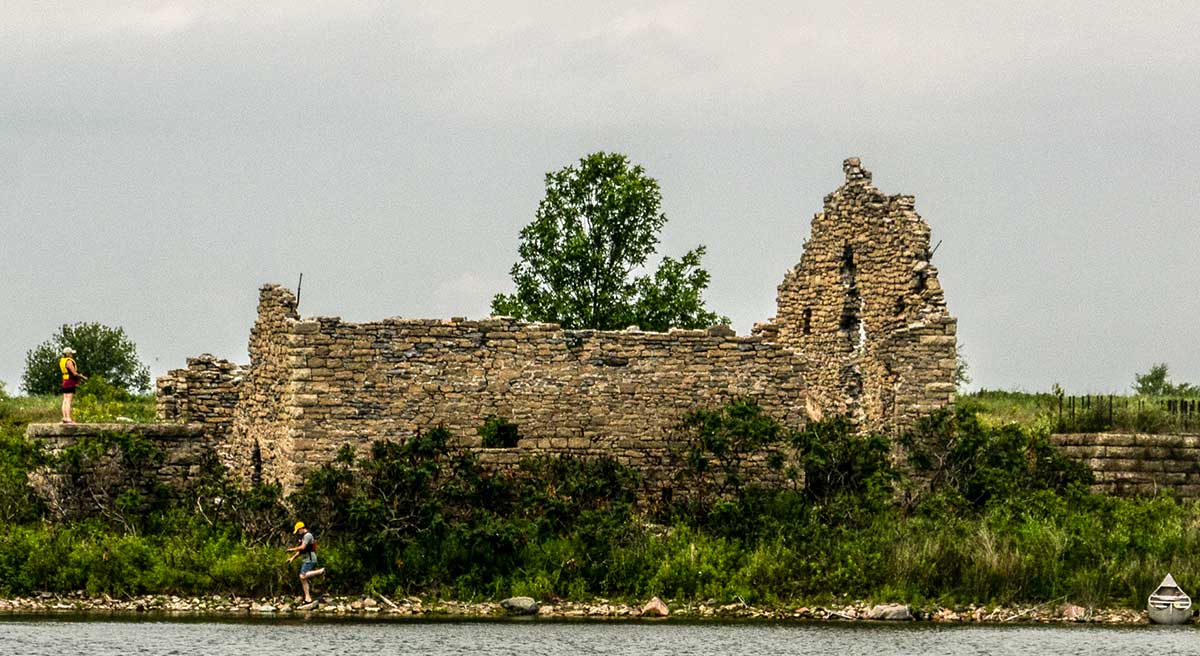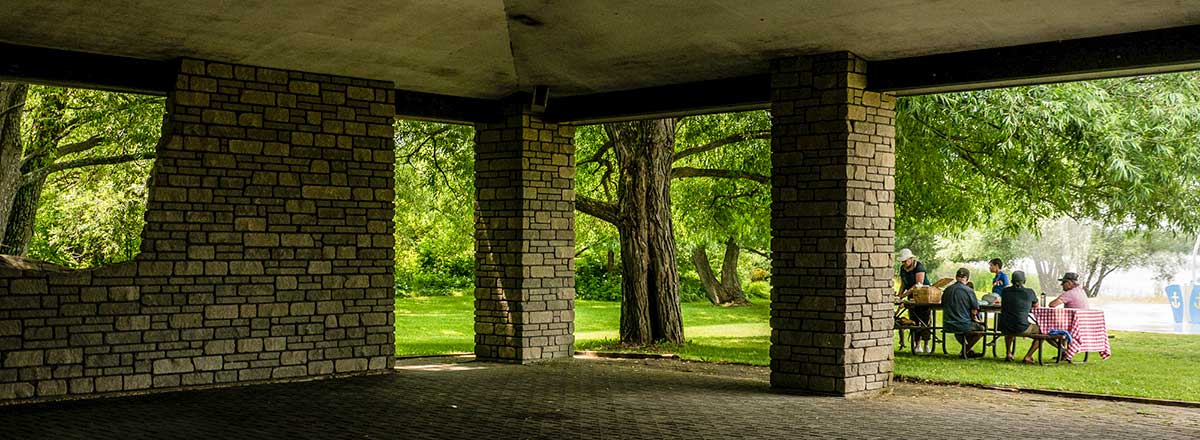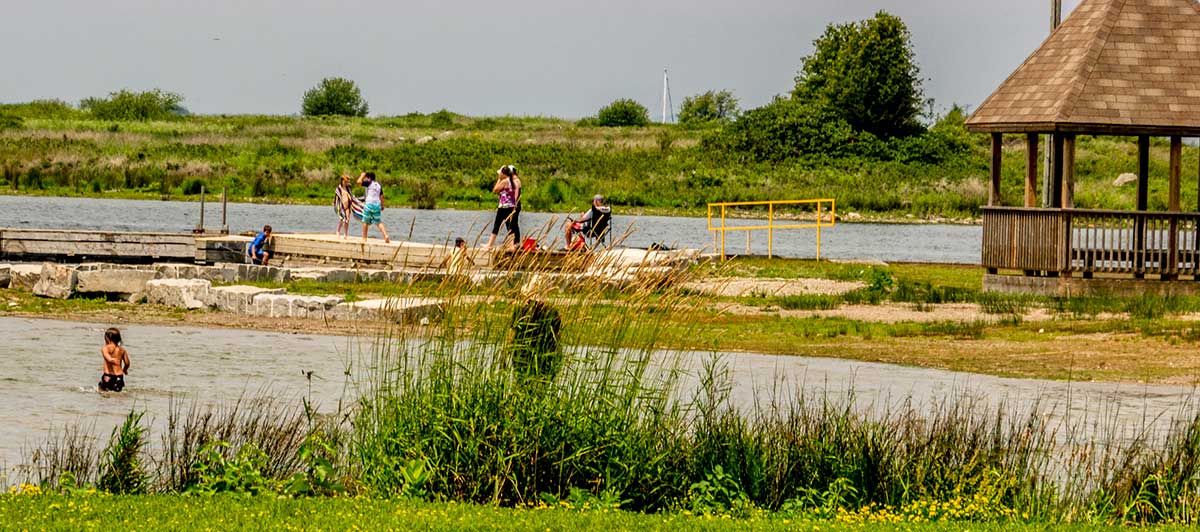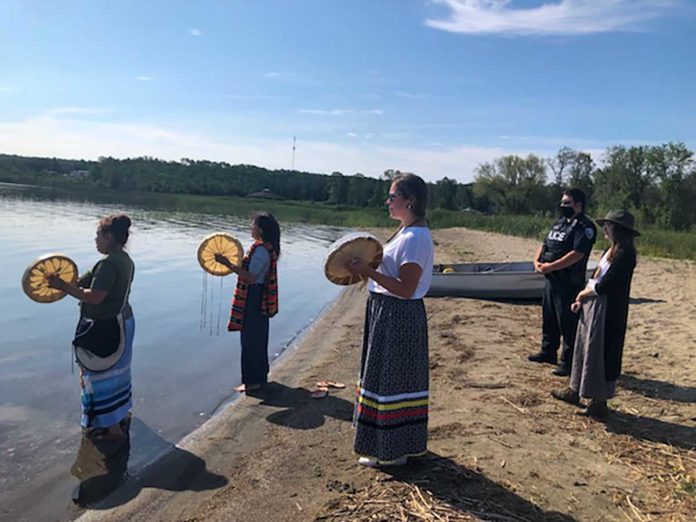by Isobel Harry
At the far northeast tip of the town of Little Current in the Town of Northeastern Manitoulin and the Islands (NEMI), overlooking the North Channel of Lake Huron and the LaCloche mountains on the far shore, a great summer getaway awaits.
Got kids? Bring them here to swim at the beach, get drenched in the waterspouts of the splash pad, run around the lawns and tucker themselves right out on the playground slides as you keep an eye out, all the while relaxing at one of the many picnic tables in Low Island Park.
The sprawling municipal green space and beach accommodate lots of recreational activities for all ages, with fields for ball and soccer, a skateboard park, a dock for launching canoes, kayaks and oneself into the water, a pavilion with washrooms and change rooms, walking trails, historical sites, all in a lush setting of big trees shading the aforementioned numerous picnic spots.
To the left of the pavilion is an introduction to the history of this area by way of a woodsy walking trail around the still-imposing remains of the Red Mill. A nearby heritage plaque describes this first large steam-powered lumber mill, built here in 1886.
Little Current’s reputation as a lumber town had been established in the 1850s, when George Abotossaway, having settled here with other Anishinaabe families at that time, supplied wood from his sawmill to the traffic of passing steamers; these first inhabitants called this place Wewebjiwang – “where the waters flow back and forth,” later translated to Little Current in English and Petit Courant in French. After the Treaty of 1862 opened the Island to non-Indigenous settlers, the Anishinaabe residents of Little Current were removed to what is now Aundeck Omni Kaning First Nation, or AOK, about seven km from town.
Another ‘ghost’ mill, the Conlon Brothers’ mill, can be seen standing roofless, solitary yet dignified, on Picnic Island just north of the beach. In those long gone days of the lumber boom, yet another mill processed lumber nearby—the Potter Company mill. A plaque describes the “community of modest residences,” known as Knockerville, that grew here after the Potter mill ceased operations, situated where Boyle Marine is today. The three large mills, operating day and night, shipping millions of feet of pine, employed hundreds of men who roomed in several waterfront boarding houses.

A wander along Little Current’s long boardwalk from near here all the way to the Swing Bridge reveals the enduring importance of the waterfront in this port town. Countless pleasure craft dock at Spider Bay Marina and the marina of the Port of Little Current; the docks in town count cruise ships (not during the pandemic) and North Channel Tours’ sightseeing vessel among the slips. The Swing Bridge is worth a close look—the working iron structure, erected in 1913 and an Ontario Heritage site, has been the only land access to Manitoulin for one hundred and eight years, swinging open for marine traffic once an hour during sailing season.
Overlooking the lakeside activity are the busy downtown storefronts and services of Water Street, including the historic businesses of Turners’ stylish store and marine chart dealership (here since 1879), The Manitoulin Expositor weekly newspaper—first published in Manitowaning in 1879 and relocated to Little Current in 1888, and the Anchor Inn Hotel, built as the Mansion House in 1888, now with a licenced restaurant patio spilling onto the street.
More recent additions to the business centre include cafes, clothing stores, banks, a stationery store, LCBO outlet, and much else, capped on Saturday mornings by the NEMI Farmers’ Market at the western end. This is just the older part of the downtown business centre, which now spreads out like spokes around the town: gas, groceries, veterinarian, more dining options, a microbrewery, hotel and conference centre, large hardware store, paint store, community centre (and vaccination hub during the pandemic), fresh fish store, beer store, hospital, churches and on it goes, spreading south, east, west and north to the Swing Bridge.
Back at the beach on Low Island, however, it all comes to a nice, peaceful halt. The pavilion that houses the washrooms and change rooms hides an interesting architectural detail behind the municipal building façade that faces the ample parking lot: go around beachside and be surprised by a vaulted ceiling and stone walls open to the air and the lake beyond, echoing in feeling the remnants of the Red Mill nearby, perfect as a shelter from untimely rain showers. Just outside on the lawn, a group sets a picnic table with tablecloth and wicker basket in anticipation of the afternoon’s al fresco feast.
Between the pavilion and the beach are the splash pad and playground, scenes of frenzied fun by an ever-changing cast of sodden characters (er, children) erupting in screams of delight. On the beach and dock below, people busily undertake to swim, look for minnows, put out a canoe or unfold deck chairs; a gazebo provides shade and to the right, a hiking trail contours the water’s edge with a view over to the old Conlon Brothers’ stone lumber mill.
So, do bring the kids, bring a friend, bring a picnic. Escape it all for a few hours. There’s plenty to do here, including taking in all the beachside pleasures of our short summer from the comfort of a folding chair.

